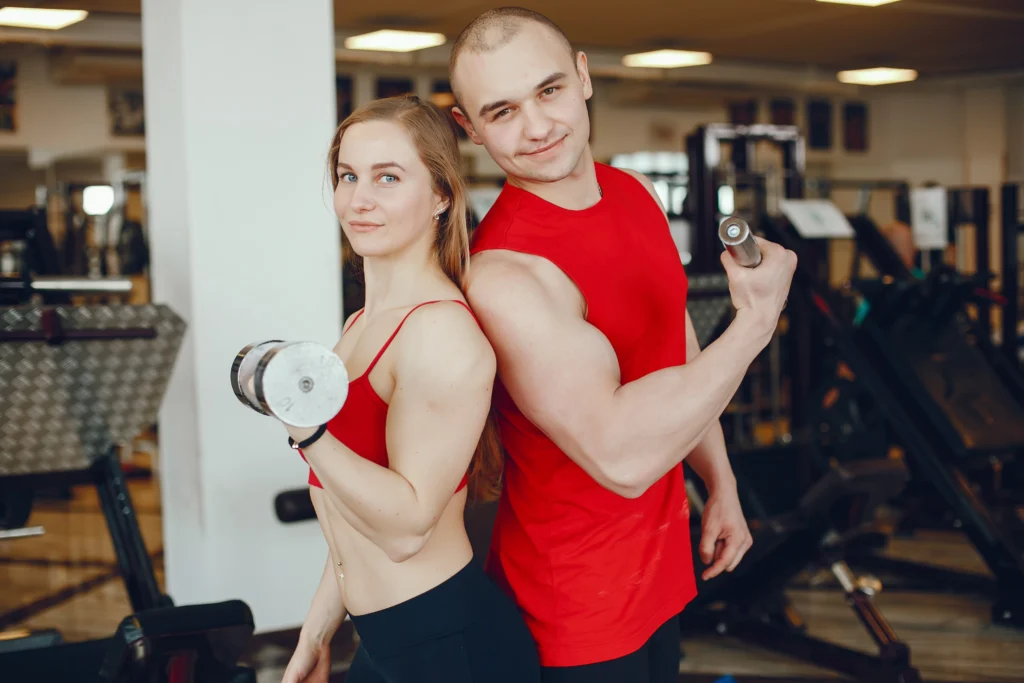IPPT Calculator by Gender– Male vs Female Scoring Differences
IPPT Calculator by Gender allows servicemen and servicewomen in Singapore to understand how their scores are calculated in the Individual Physical Proficiency Test (IPPT) is a core fitness requirement for servicemen and servicewomen in Singapore. While the test format is the same—push-ups, sit-ups, and a 2.4 km run—the scoring system differs for men and women. The Ministry of Defence (MINDEF) applies separate benchmarks to ensure fairness, acknowledging physiological differences between genders and across age groups.
For example, a female participant may achieve the same score with fewer push-ups or a longer run time compared to a male participant of the same age bracket. These adjustments are designed to create an equal measure of overall fitness potential.
If you want to calculate your own score instantly, try our IPPT Calculator and see how your results compare.
Why Does Gender Affect IPPT Scoring?
The IPPT is designed to measure overall physical readiness, but men and women are assessed on different scoring charts. This separation is not meant to give one group an advantage over the other—it reflects biological and physiological realities.

On average, men tend to have higher muscle mass and upper-body strength, while women generally show stronger flexibility and endurance in specific areas. If both genders were assessed against identical benchmarks, the system would unfairly disadvantage one side.
To address this, MINDEF uses gender-specific standards for push-ups, sit-ups, and the 2.4 km run. For example, a male and a female participant in the same age group may perform different numbers of repetitions yet still achieve an equivalent score. By tailoring the benchmarks, the IPPT ensures fairness, inclusivity, and a balanced way of comparing fitness levels across the entire SAF community.
Male vs Female Scoring Differences (Age 25–29)
| Activity | Male Passing Standard | Female Passing Standard |
|---|---|---|
| Push-Ups | ~30 reps | ~20 reps |
| Sit-Ups | ~32 reps | ~27 reps |
| 2.4 km Run | ≤ 12 min 45 sec | ≤ 15 min 30 sec |
Note: Figures above are simplified examples for illustration. For an accurate, personalised score use our IPPT Calculator.
IPPT Calculator for Male Participants
The IPPT Calculator for male participants provides a clear way to understand scoring across different age groups. Since physical fitness varies naturally with age, the standards are adjusted to ensure fairness. Each male participant is assessed in three categories: push-ups, sit-ups, and the 2.4km run. Points are awarded for each station, and the total score determines the award band (Pass, Pass with Incentive, Silver, or Gold).

Male NSmen are tested in three key areas: muscular endurance (push-ups), core strength (sit-ups), and cardiovascular fitness (2.4km run). Each component contributes up to 25 points, giving a maximum of 100 points in total.

Performance standards vary by age group. Younger participants must achieve higher repetitions or faster timings for maximum points, while older participants have slightly reduced standards.
Below is a simplified scoring reference for male participants (values are approximate benchmarks used in MINDEF guidelines):
Male IPPT Scoring Chart (Simplified)
| Age Group | Push-Ups (25 pts) | Sit-Ups (25 pts) | 2.4km Run (25 pts) |
|---|---|---|---|
| 21–24 | 42 reps | 48 reps | 9 min 45 sec |
| 25–29 | 40 reps | 47 reps | 10 min 00 sec |
| 30–34 | 38 reps | 46 reps | 10 min 30 sec |
| 35–39 | 36 reps | 45 reps | 11 min 00 sec |
| 40–44 | 34 reps | 44 reps | 11 min 30 sec |
| 45–49 | 30 reps | 42 reps | 12 min 00 sec |
| 50+ | 26 reps | 40 reps | 13 min 00 sec |
IPPT Calculator for Female Participants
The IPPT Calculator for female participants provides a clear breakdown of scoring standards across different age groups. Since physical performance levels differ with age, the requirements are adjusted to maintain fairness. Each female participant is assessed in three categories: push-ups, sit-ups, and the 2.4km run. Points are awarded for each station, and the total score determines the award band (Pass, Pass with Incentive, Silver, or Gold).

Female NSFs and SAF/SCDF personnel are tested in three areas: upper body strength (push-ups), core endurance (sit-ups), and cardiovascular ability (2.4km run). Each station contributes up to 25 points, allowing a maximum score of 100 points.

Performance benchmarks differ by age group. Younger participants are expected to complete higher repetitions or faster timings for full points, while standards are slightly reduced for older age brackets.
Below is a simplified scoring reference for female participants (values are approximate benchmarks based on MINDEF guidelines):
Female IPPT Scoring Chart (Simplified)
| Age Group | Push-Ups (25 pts) | Sit-Ups (25 pts) | 2.4km Run (25 pts) |
|---|---|---|---|
| 18–24 | 40+ | 45+ | ≤ 11:30 |
| 25–29 | 38+ | 43+ | ≤ 12:00 |
| 30–34 | 36+ | 41+ | ≤ 12:30 |
| 35–39 | 34+ | 39+ | ≤ 13:00 |
| 40–44 | 32+ | 37+ | ≤ 13:30 |
| 45–49 | 30+ | 35+ | ≤ 14:00 |
| 50+ | 28+ | 33+ | ≤ 14:30 |
Male vs Female IPPT – A Direct Comparison
The IPPT measures the same three fitness components for everyone — push-ups, sit-ups, and the 2.4 km run — but scoring thresholds differ between male and female participants to ensure fair assessment across physiological differences and age brackets. Below you’ll find a concise, side-by-side comparison of award thresholds, minimum passing scores, and the Gold / Silver / Incentive bands so you can see how standards line up at a glance.

Male vs Female IPPT – A Direct Comparison
The IPPT scoring system varies not only by gender but also by age group. Below is a side-by-side comparison showing the minimum benchmarks required for Gold, Silver, and Incentive Pass across different age ranges.
| Age Group | Male – Minimum Scores | Female – Minimum Scores | ||||
|---|---|---|---|---|---|---|
| Gold | Silver | Incentive Pass | Gold | Silver | Incentive Pass | |
| 18–24 | 85 | 75 | 61 | 82 | 72 | 61 |
| 25–29 | 83 | 73 | 61 | 80 | 70 | 61 |
| 30–34 | 81 | 71 | 61 | 78 | 68 | 61 |
| 35–39 | 78 | 68 | 61 | 75 | 65 | 61 |
Disclaimer: These benchmarks are simplified examples for illustration. For official and updated standards, always refer to MINDEF Singapore’s IPPT guidelines.
How to Calculate IPPT Score by Gender
Step 1: Enter Your Basic Information
The first step is to input your gender and age group into the IPPT calculator. These two factors determine the scoring standards because men and women are assessed differently, and performance thresholds increase with age.
Step 2: Record Your Event Results
The three events are:
- Push-Ups (1 min)
- Sit-Ups (1 min)
- 2.4 km Run
Each event gives you points based on how many reps you complete (for push-ups/sit-ups) or how fast you run (for 2.4 km).
Step 3: Add the Scores Together
Your total IPPT score is the sum of all three events.
Example 1: Male Case
- Profile: Male, Age 25
- Performance: 40 push-ups, 42 sit-ups, 2.4 km run in 11:20
- Score Breakdown:
- Push-Ups: 75 points
- Sit-Ups: 72 points
- Run: 60 points
- Total: 207 points
Result: Meets the Silver standard for his age group.
Example 2: Female Case
- Profile: Female, Age 23
- Performance: 32 push-ups, 40 sit-ups, 2.4 km run in 13:00
- Score Breakdown:
- Push-Ups: 70 points
- Sit-Ups: 70 points
- Run: 62 points
- Total: 202 points
Result: Achieves the Gold standard for her age group.
How to Interpret Results
- 61 points per event (or higher) = you are on track to pass.
- >75 points per event = you are pushing into Gold standard.
- If one event is weak, you must compensate by scoring higher in the others.
👉 Use the IPPT Calculator to instantly compute your own score and see where you stand.
Training Tips for Men vs Women
When preparing for the IPPT, training should be aligned with the physiological strengths and common challenges faced by men and women. Below are focused strategies to maximize performance and achieve higher scores.

Training Focus for Men
Men often have an advantage in upper-body strength but may struggle with stamina or flexibility. A balanced approach is essential.
Key Areas to Prioritize:
- Strength + Endurance Balance – Don’t rely solely on push-up power; combine resistance training with cardio.
- Cardio Conditioning – Interval runs (e.g., 400m repeats) to build speed and 2.4 km endurance.
- Core & Flexibility – Add planks, yoga, or mobility work to improve sit-up form and prevent injuries.
Example :
A 25-year-old male aiming for Gold should combine 3 days of running drills (interval + tempo runs) with 2 days of upper-body strength training (bench press, pull-ups, push-ups).
Training Focus for Women
Women often excel in endurance but may need to put extra effort into upper-body and core strength.
Key Areas to Prioritize:
- Core Strength – Focused sit-up variations, planks, and Pilates improve scoring efficiency.
- Upper-Body Power – Progressive push-up programs (elevated → knee → standard) to steadily build strength.
- Stamina & Pacing – Long-distance base runs and controlled pacing strategies for the 2.4 km run.
Example :
A 22-year-old female targeting Silver should do 2 long slow runs (5–6 km), 2 strength/core sessions, and 1 interval training day (short sprints with rest periods).
Gender-Specific Strategies to Improve Scores
- Men: Avoid burnout from overtraining push-ups; mix cardio with strength. Focus on pacing in the 2.4 km run instead of sprinting too early.
- Women: Emphasize gradual push-up progression and core engagement for sit-ups. Build consistent running rhythm to sustain pace across all 6 laps.
IPPT Standards by Age & Gender
IPPT performance standards are not static. Both gender and age bracket determine how many points you can earn in each station. This system ensures fairness by accounting for natural differences in physiology and fitness potential.
Why Age & Gender Matter
- Age brackets: Standards are grouped in 5-year intervals (e.g., 18–24, 25–29, 30–34, etc.). As age increases, the minimum reps or timing requirements are gradually adjusted downward.
- Gender: Male and female benchmarks differ across push-ups, sit-ups, and 2.4km run, reflecting physiological differences in average strength and endurance.
IPPT Standards 2025 Update)
| Age Group | Gender | Push-Ups (Full Points) | Sit-Ups (Full Points) | 2.4 km Run (Full Points) |
|---|---|---|---|---|
| 18–24 | Male | 42+ | 48+ | ≤ 9:45 |
| 18–24 | Female | 20+ | 43+ | ≤ 11:30 |
| 35–39 | Male | 36+ | 42+ | ≤ 10:45 |
| 35–39 | Female | 16+ | 39+ | ≤ 12:45 |
| 45+ | Male | 28+ | 34+ | ≤ 12:00 |
| 45+ | Female | 12+ | 30+ | ≤ 14:00 |
Frequently Asked Questions (FAQs)
Below are clear, expert-backed answers to the most common questions about the IPPT calculators and gender-based scoring. Each reply is written to be scannable, trustworthy, and helpful — use these both for users and for FAQ schema on the page.
Conclusion
The IPPT scoring system may differ for men and women, but these differences are designed to ensure fairness and equal opportunity across all participants. Gender-based benchmarks reflect physiological differences, so that both male and female participants are assessed on a level playing field.
Whether you are preparing for your first test or aiming for a Gold award, it’s important to understand the standards for your gender and age group. This helps you train smarter and track progress more effectively.
To check your own performance level, try our interactive IPPT Calculator. It will show you exactly where you stand and how close you are to achieving Bronze, Silver, or Gold.

